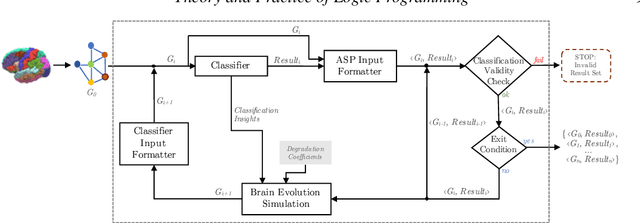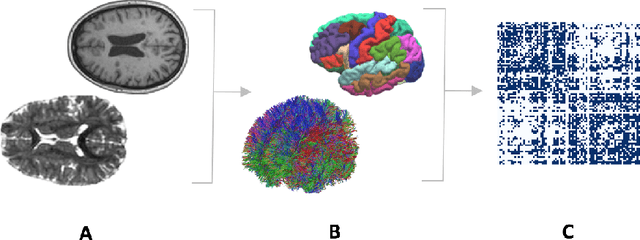Francesco Cauteruccio
Characterizing Information Shared by Participants to Coding Challenges: The Case of Advent of Code
Dec 03, 2024Abstract:Advent of Code (AoC from now on) is a popular coding challenge requiring to solve programming puzzles for a variety of skill sets and levels. AoC follows the advent calendar, therefore it is an annual challenge that lasts for 25 days. AoC participants usually post their solutions on social networks and discuss them online. These challenges are interesting to study since they could highlight the adoption of new tools, the evolution of the developer community, or the technological requirements of well-known companies. For these reasons, we first create a dataset of the 2019-2021 AoC editions containing the discussion threads made on the subreddit {\tt /r/adventofcode}. Then, we propose a model based on stream graphs to best study this context, where we represent its most important actors through time: participants, comments, and programming languages. Thanks to our model, we investigate user participation, adoption of new programming languages during a challenge and between two of them, and resiliency of programming languages based on a Stack Overflow survey. We find that the top-used programming languages are almost the same in the three years, pointing out their importance. Moreover, participants tend to keep the same programming language for the whole challenge, while the ones attending two AoCs usually change it in the next one. Finally, we observe interesting results about the programming languages that are ``Popular'' or ``Loved'' according to the Stack Overflow survey. Firstly, these are the ones adopted for the longest time in an AoC edition, thanks to which users have a high chance of reaching the end of the challenge. Secondly, they are the most chosen when a participant decides to change programming language during the same challenge.
Characterizing User Archetypes and Discussions on Scored.co
Jul 31, 2024Abstract:In recent years, the proliferation of social platforms has drastically transformed the way individuals interact, organize, and share information. In this scenario, we experience an unprecedented increase in the scale and complexity of interactions and, at the same time, little to no research about some fringe social platforms. In this paper, we present a multi-dimensional framework for characterizing nodes and hyperedges in social hypernetworks, with a focus on the understudied alt-right platform Scored.co. Our approach integrates the possibility of studying higher-order interactions, thanks to the hypernetwork representation, and various node features such as user activity, sentiment, and toxicity, with the aim to define distinct user archetypes and understand their roles within the network. Utilizing a comprehensive dataset from Scored.co, we analyze the dynamics of these archetypes over time and explore their interactions and influence within the community. The framework's versatility allows for detailed analysis of both individual user behaviors and broader social structures. Our findings highlight the importance of higher-order interactions in understanding social dynamics, offering new insights into the roles and behaviors that emerge in complex online environments.
Extended High Utility Pattern Mining: An Answer Set Programming Based Framework and Applications
Mar 23, 2023Abstract:Detecting sets of relevant patterns from a given dataset is an important challenge in data mining. The relevance of a pattern, also called utility in the literature, is a subjective measure and can be actually assessed from very different points of view. Rule-based languages like Answer Set Programming (ASP) seem well suited for specifying user-provided criteria to assess pattern utility in a form of constraints; moreover, declarativity of ASP allows for a very easy switch between several criteria in order to analyze the dataset from different points of view. In this paper, we make steps toward extending the notion of High Utility Pattern Mining (HUPM); in particular we introduce a new framework that allows for new classes of utility criteria not considered in the previous literature. We also show how recent extensions of ASP with external functions can support a fast and effective encoding and testing of the new framework. To demonstrate the potential of the proposed framework, we exploit it as a building block for the definition of an innovative method for predicting ICU admission for COVID-19 patients. Finally, an extensive experimental activity demonstrates both from a quantitative and a qualitative point of view the effectiveness of the proposed approach. Under consideration in Theory and Practice of Logic Programming (TPLP)
A Logic-Based Framework Leveraging Neural Networks for Studying the Evolution of Neurological Disorders
Oct 21, 2019



Abstract:Deductive formalisms have been strongly developed in recent years; among them, Answer Set Programming (ASP) gained some momentum, and has been lately fruitfully employed in many real-world scenarios. Nonetheless, in spite of a large number of success stories in relevant application areas, and even in industrial contexts, deductive reasoning cannot be considered the ultimate, comprehensive solution to AI; indeed, in several contexts, other approaches result to be more useful. Typical Bioinformatics tasks, for instance classification, are currently carried out mostly by Machine Learning (ML) based solutions. In this paper, we focus on the relatively new problem of analyzing the evolution of neurological disorders. In this context, ML approaches already demonstrated to be a viable solution for classification tasks; here, we show how ASP can play a relevant role in the brain evolution simulation task. In particular, we propose a general and extensible framework to support physicians and researchers at understanding the complex mechanisms underlying neurological disorders. The framework relies on a combined use of ML and ASP, and is general enough to be applied in several other application scenarios, which are outlined in the paper.
 Add to Chrome
Add to Chrome Add to Firefox
Add to Firefox Add to Edge
Add to Edge